(Editor’s note: During the month of April — and extending into early May — the Journal has presented a series of stories about vintage rallies and vintage racing. Today’s is an interview with Alan Travis, well-known as a rallyist who has competed with some of the earliest vehicles in the world. If you have a story about your participation in a vintage rally or race that you’d like to share, please email us at [email protected].)
The world’s oldest automobiles are something of an obsession for Alan Travis. Not merely as a restorer and collector, but as someone who uses them regularly in rallies and tours, sometimes driving thousands of miles in a vehicle that is well over a century old.
The Scottsdale, Arizona, resident has among his collection of pre-1915 cars and motorcycles two that were produced in the 19th century. And yes, he drives them, too.
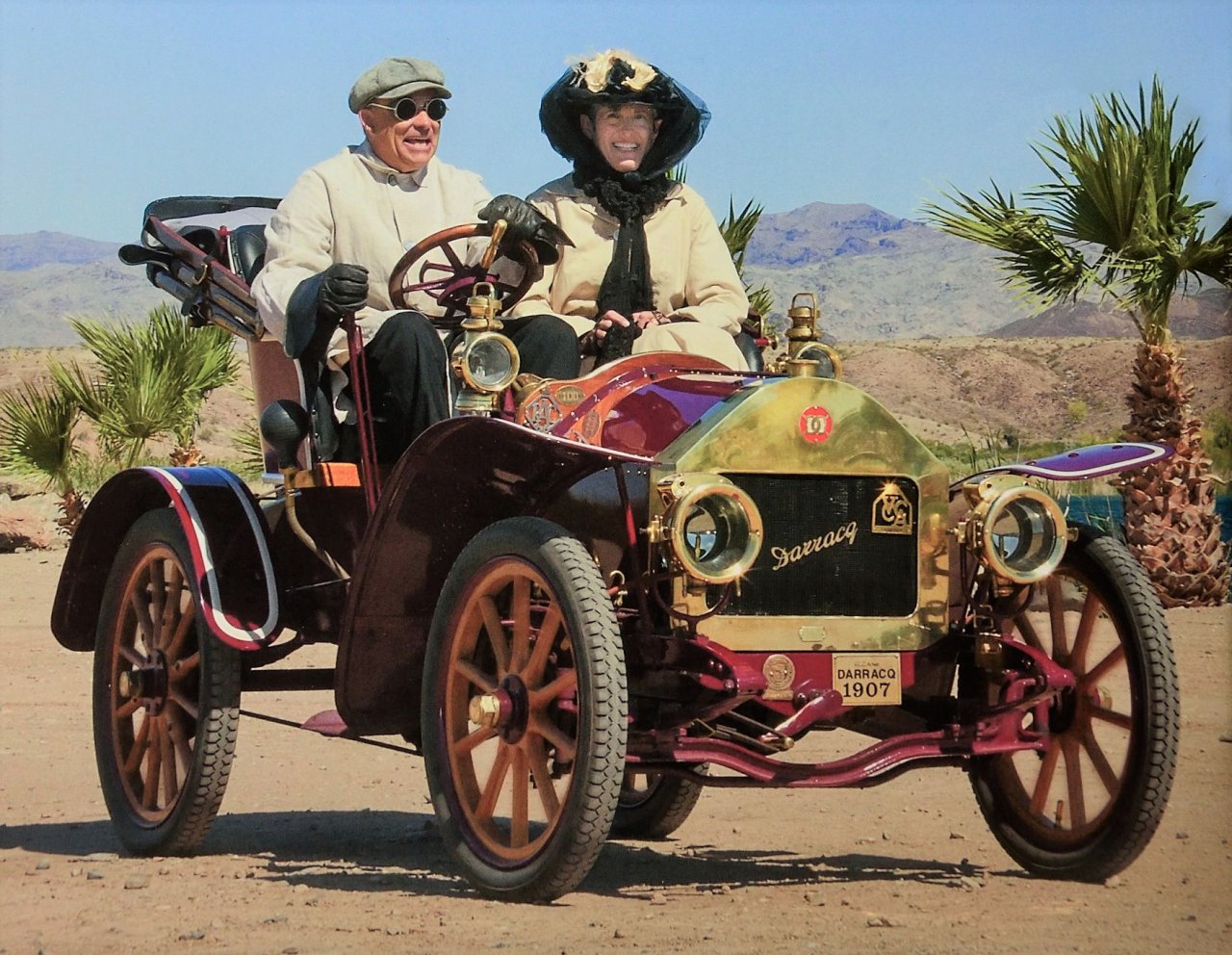
In recent years, Travis drove each of his 1890s vehicles in the famed London to Brighton Veteran Car Run, which only permits motorized conveyances built before 1905. Also known as the Emancipation Run, it was first held in 1896 to celebrate the Locomotives on Highway Act, which liberalized onerous British highway laws.
The goal of the 54-mile rally, replete with challenging hills for the archaic, sparsely powered machines, is not to win as the fastest competitor but merely to complete the run intact. Many do not make it all the way. Travis does, despite having some of the oldest cars in the event.
“Two or three years ago, I drove my 1897 De Dion Bouton explosion trike,” Travis said, referring to his spindly single-seat three-wheeler known for emanating an explosive blast on each stroke of its single-cylinder engine.
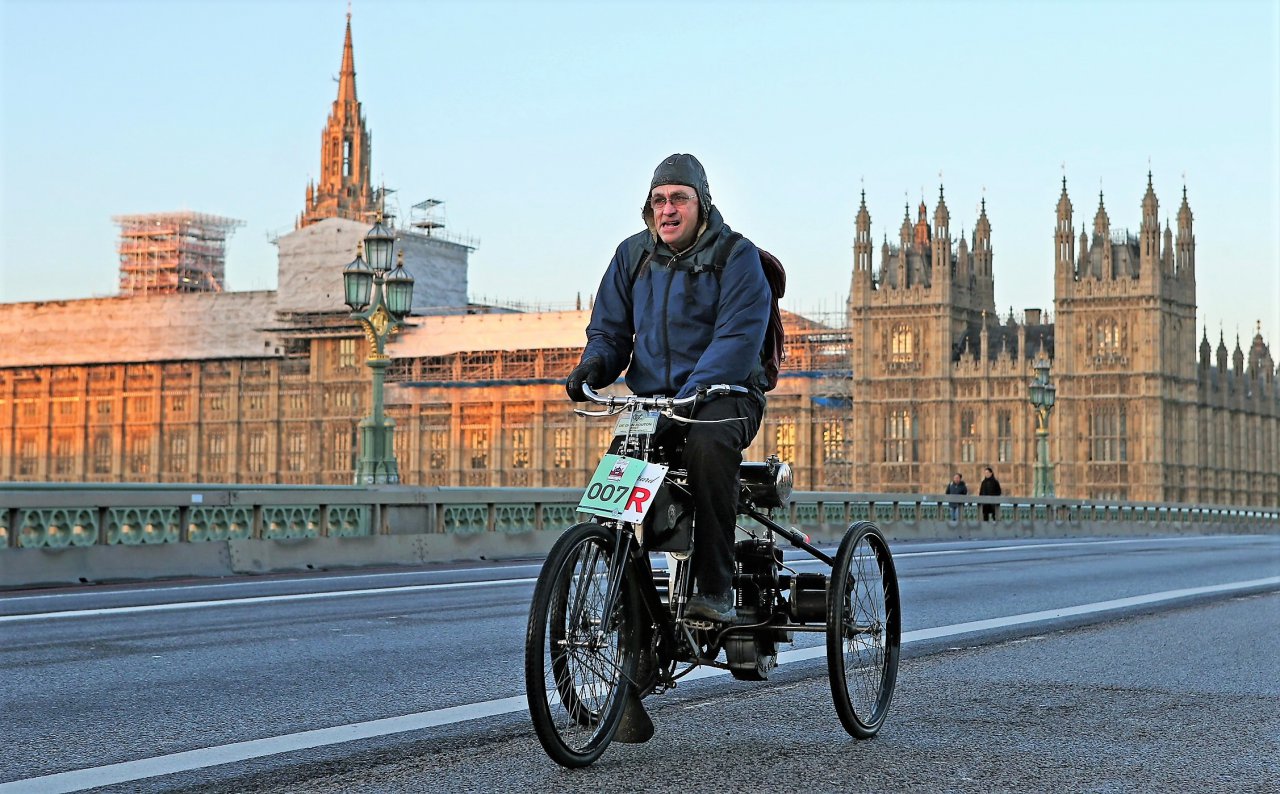
The trike has been certified as entirely genuine, more than 90 percent original and with any replacement parts made before 1900, he added.
“It’s the earliest production vehicle in North America. Nobody (else) has an 1897 vehicle that runs.”
In the typically damp, chilly weather of the November event, Travis started near the front as the vehicles are staged according to age. His was No. 5, the first four being either coal or steam powered.
The De Dion runs on a hellish concoction of ether and benzene, or hexane and benzene, Travis explained, calling it “an awful gas.”
“It has no carburetor, it has no real ignition,” he noted. “It has an atmospheric valve that sucks that mixture in and then it has a make-and-break coil that ignites it. And when you adjust all the 10 adjustments, you can go down the road as much as 40 miles an hour on this thing.”

The other motorcar that he ran in the British classic was just one year younger.
“I’ve also run the London to Brighton in my 1898 Jean Perrin,” Travis said. “We finished with that, too.”
By “we,” Travis is mainly referring to himself and his wife, Mary, who accompanies him on many of his wind-swept ancient-car drives. She’s also enthusiastic about her husband’s motoring pursuits, often wearing period garb and a happy grin.
Although Travis has gone on hundreds of rallies and tours, by his estimate, he’s perhaps best known for his successes in The Great Race, formerly known as The Great American race, a cross-country US event of 3,000 to 5,000 miles in which he competed every year from 1984 through 1994, and then again in 2013.
He won it twice, in 1987 driving a 1916 Mitchell and in 1993 in a 1910 Knox, a grand prix racer fitted for street driving. In 2013, the rally car was a 1907 Renault Vanderbilt Cup racer, the oldest car ever to compete in the event. It finished in the top 10, Travis said.

The Great Race is not a race but a time-speed-distance rally in which participants must adjust their speeds over timed segments, attempting to come as close as possible to the elapsed times predetermined by the organizers. It’s a highly precise endeavor that involves great math skills and loads of timing practice with the rally vehicle before the event, gauging acceleration and braking times, among other factors.
The Knox was something very special, a luxury supercar in its day, with a lightweight alloy body and a 4.0-liter 4-cylinder engine. Travis first ran the sporty red car with gold-plated trim in the 1992 Great Race. That rally started with a bang, literally, with a mechanical disaster that could have put them out of the running.
Travis related how, before the event started in Norfolk, Virginia, the Knox had been parked outside on display and got rained on, and water apparently got inside the engine. Early the next morning, Travis was to appear with the car for a pre-rally TV segment of Good Morning America to promote the event, which started later that day.
“The night before, when I started the engine, a big bang happened – we broke a (connecting) rod, and the rod went out through the crankcase,” he said. “Well, we had two important things to do. We had to do Good Morning America, and that afternoon, we had to start The Great American Race.”

Undaunted, Travis with a crew of helpers, including some fellow competitors, set to work somehow getting the engine patched up overnight and running again.
“I took the pan off, took the broken rod out, took that piston out,” he related. “It bent the camshaft also, so we went ahead and wired the camshaft.
“We got a stop sign and some tin snips, and we cut a big patch for the crankcase. We used JB Weld and duct tape, put the engine back together and I managed to get it to run on three cylinders for Good Morning America. It was leaking a lot more than normal, but it ran. After the interview, I tuned it up more and made it so that it didn’t leak as much.”
After that, he needed to re-practice the changed acceleration times with the damaged engine to compete in the time-speed-distance rally.
And that afternoon, off they went, headed for California on a 13-day trip of more than 5,000 miles in an 82-year-old open car running on three of its four cylinders.
They nearly won the whole thing. Travis seems to have the magic touch when it comes to time-speed-distance calculations, and he was still right on despite the compromised engine performance. They won several segments and ran consistently in the top two or three entrants out of 100, he said.
At the end, the Knox came in second overall. During the rally, the eventual winner was having speedometer problems, which would have made it impossible to compete, so Travis lent one. That car finished with the best times for all the segments combined, winning The Great Race due to Travis’s assistance that also caused him to lose first place.
“Because we had shown good sportsmanship, we won Spirit of the Event,” Travis noted, speaking of one of the event’s most-revered awards.

Part of the attraction of competing in The Great Race is the 6-figure prize money with cash prizes awarded for each segment and a big bump for the overall winner. The top prize that year was more than $100,000.
However, Travis noted, coming in second meant a big cash prize as well, and combined with segment victories, he still went home with more than $100,000.
The generous prize money available for top time-speed-distance rallies is what originally prompted Travis to give up off-road racing, in which he competed in such major events as the Baja 1000, and take up rallying instead.

Competing in off-road racing at a high level was expensive, and often damaging to the vehicles which then needed costly repairs, usually making the effort a total loss.
“It was an adrenaline rush, but it wasn’t cost-effective,” Travis said.
Playing around with ancient automobiles is also an adrenaline rush, he said, from restoring them himself (aside from body painting and some of the machining) to taking them out on long road trips in events where his is generally the oldest vehicle entered, which he says is a thrill in itself.
His high-dollar rally days are behind him, Travis said, mainly due to how much such competitive events have changed because of electronic aids and later-model cars among the rallyists.
“People don’t have the skills for rallies anymore,” he said, compared with what once was required when using purely analog equipment and intense calculating.
“These were cars in which you used mechanical watches, kitchen clocks and stopwatches, and analog speedometers. You had to do a lot of math in the years that we did it and were successful.”
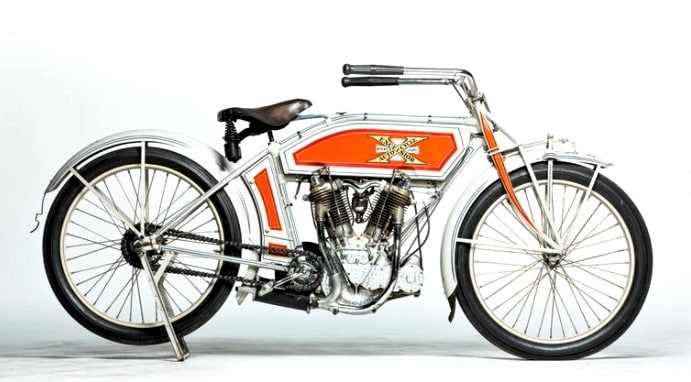
Travis still runs his old cars and motorcycles in many non-competitive tours, often with Mary along. Five years ago, he rode a 1913 Excelsior motorcycle in the Cannonball Run from Kitty Hawk, North Carolina, to Marina del Rey, California, a rally with a total distance of about 5,000 miles.
“My Cannonball bike is an original board-track racing Excelsior, no suspension at all, no transmission, so that when you pedal it, it goes 30 mph at its slowest speed. And it has no brakes.”
No brakes?
“Oh, you let off the gas, and its 1,000cc racing engine slows it down. And it has a kill switch.”
“That was a challenge,” he added.
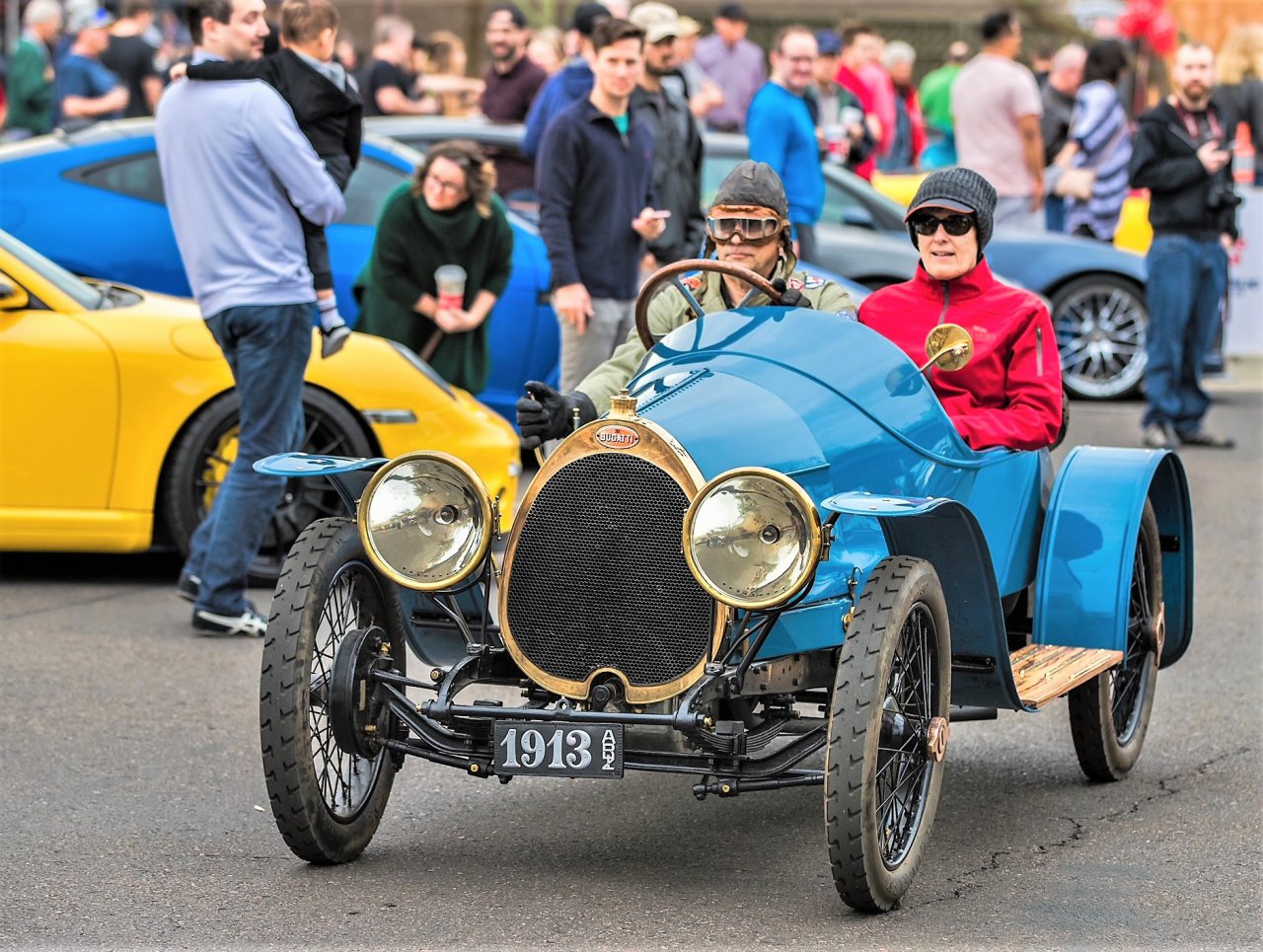
Other vehicles in his possession that are regular rally and tour mounts include the splendid 1906 Renault, a 1906 Duryea (he has a photo of founder Frank Duryea sitting in the same car when it was new) and his 1913 Bugatti Type 22 Torpedo, which he often drives to local shows and events, and calls “the world’s favorite.”
“That’s a brand that people recognize,” Travis said. “It looks like a Bugatti, and we have the oldest one on the road in the world, and one of the oldest ones, period, in the world. I’ve driven it 10,000 miles since I restored it.”
That Bugatti marked another high point in Travis’s antique-car pursuit: showing it on the lawn at the 2019 Pebble Beach Concours d’Elegance.
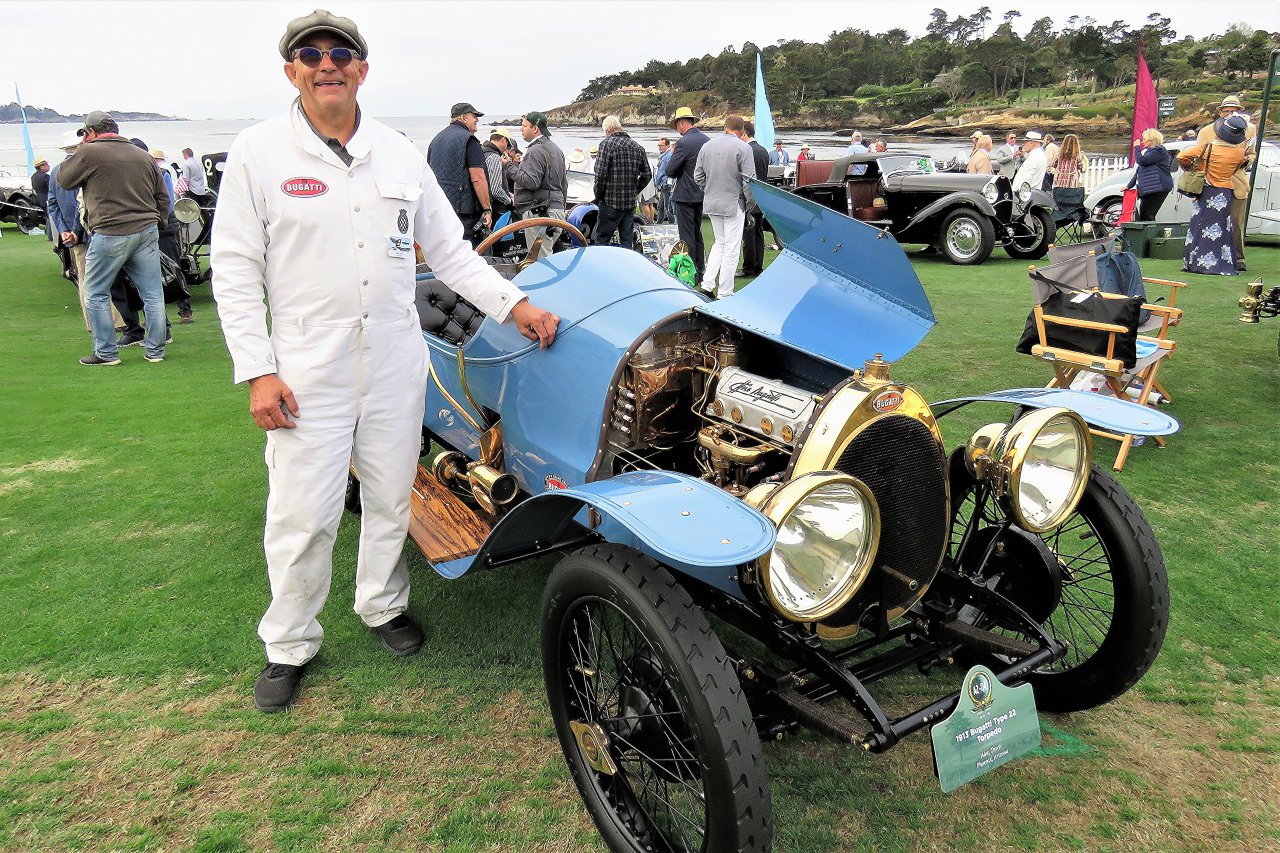
So, doesn’t it concern him driving on public roads in such a special antique car that is so valuable, both historically and monetarily?
“I’m the one who spent 3,500 hours restoring it,” he said. “And I believe that no matter what I do to it, that I can fix it.”



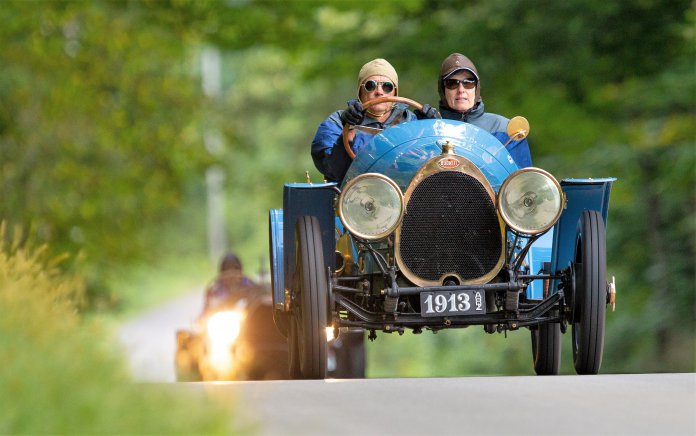


Great story, thanks for presenting! Really provides some inspiration for those of us who have been shy about driving our old cars.
Alan truly is a national treasure, not only for rescuing these important examples of automotive history, but even more so for the fact that he drives them regularly and shares them with us all at car shows in Scottsdale. Last Saturday he drove the Renault, attired in a period full length leather coat and massive leather gloves, to our monthly Scottsdale Motorsports Gathering. He regales everyone one with stories and is invariably the hit of every show he attends.
Good morning 🌄, after reading this article,it only shares with the folks that don’t know the Travis, personally.
As we all know,there are some with large sums of wealth that buy expensive auto’s,,and can’t change a spark plugs.
It’s all about ego.
Having chatted with the Travis,they are the real deal.time and success has not changed them.it would be a big honor to call them FRIENDS.
I’ve had the honor of knowing the both Mary and Alan for some time. Outstanding people that truly love sharing their knowledge about and history of their automobiles. Can’t wait to see your new home! Your friend, Steve